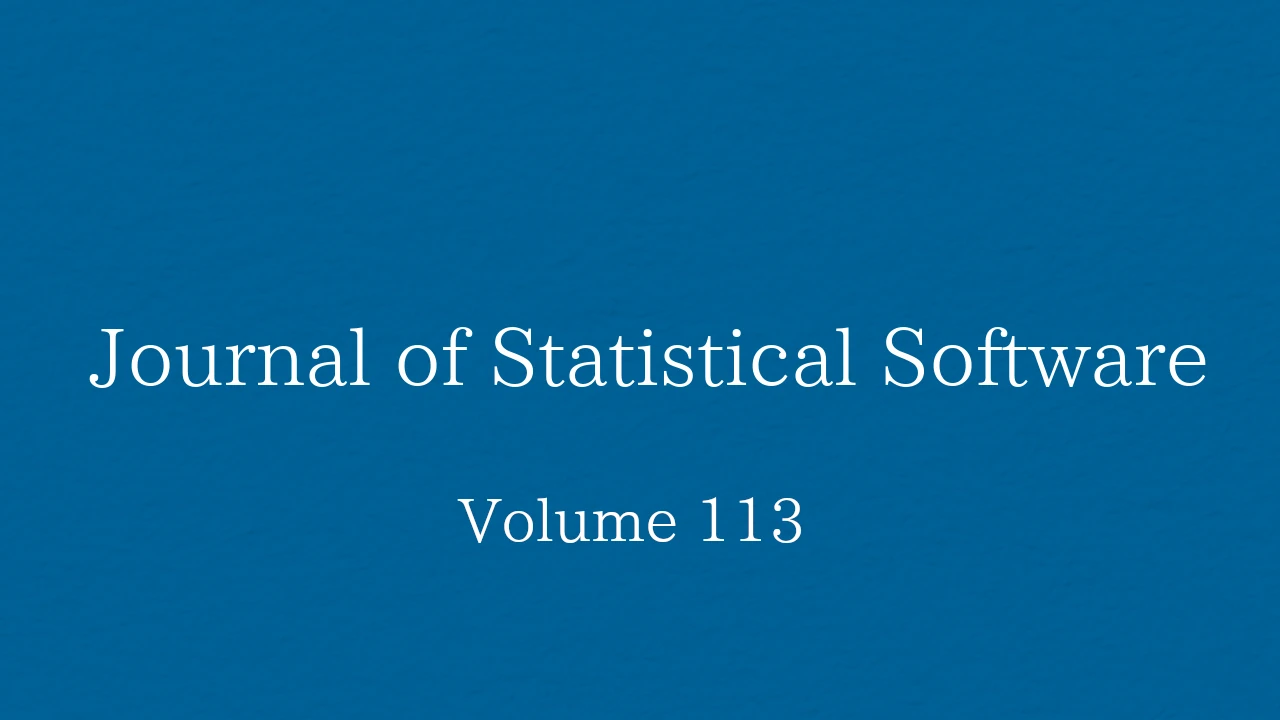記事
scpi: Uncertainty Quantification for Synthetic Control Methods
scpi: 合成制御法のための不確実性定量化
The synthetic control method offers a way to quantify the effect of an intervention using weighted averages of untreated units to approximate the counterfactual outcome that the treated unit(s) would have experienced in the absence of the intervention. This method is useful for program evaluation and causal inference in observational studies. We introduce the software package scpi for prediction and inference using synthetic controls, implemented in Python, R, and Stata. For point estimation or prediction of treatment effects, the package offers an array of (possibly penalized) approaches leveraging the latest optimization methods. For uncertainty quantification, the package offers the prediction interval methods introduced by Cattaneo, Feng, and Titiunik (2021) and Cattaneo, Feng, Palomba, and Titiunik (2025b). The paper includes numerical illustrations and a comparison with other synthetic control software.
合成制御法は、介入を受けなかった場合に介入を受けたユニットが経験したであろう反事実的結果を近似するために、未介入ユニットの加重平均を用いて介入の効果を定量化する手法を提供します。この手法は、観察研究におけるプログラム評価や因果推論に有用です。本稿では、Python、R、Stataで実装された、合成制御を用いた予測と推論のためのソフトウェアパッケージscpiを紹介します。点推定や介入効果の予測のために、このパッケージは最新の最適化手法を活用した様々な(場合によってはペナルティ付きの)アプローチを提供します。不確実性の定量化のために、このパッケージはCattaneo、Feng、およびTitiunik (2021)およびCattaneo、Feng、Palomba、およびTitiunik (2025b)によって導入された予測区間法を提供します。本論文には、数値例と他の合成制御ソフトウェアとの比較が含まれています。
SURVEYHLM: A SAS Macro for Multilevel Analysis with Large-Scale Educational Assessment Data
SURVEYHLM: 大規模教育評価データを用いたマルチレベル分析のためのSASマクロ
Special techniques must be considered during analysis of large-scale educational assessment (LSA) data. In this regard, many software packages are available to support researchers conducting secondary analyses. However, the software packages available for multilevel analyses are somewhat limited and usually contain only a few of the required techniques. In this article, we review the technical details of LSA studies and describe our comparison of software for multilevel analyses by questioning the extent to which these packages take these technical details into account. In accordance with our findings from this comparison, we developed a SAS macro for multilevel analyses of LSA data that meets all technical requirements. The macro SURVEYHLM fits multilevel models with LSA datasets. SURVEYHLM can handle up to three levels. It can fit different correlation structures for the random components and use plausible values as response variables, and the responses do not necessarily need to be normally distributed. Weights can be specified on levels 1, 2 and 3. Scaling of the level-specific weights is possible, and standard errors can be based on a sandwich estimator or calculated with either the jackknife replication technique or through user-supplied replication weights. Examples of applications are given.
大規模教育評価(LSA)データの分析には、特別な手法を考慮する必要があります。この点で、二次分析を実施する研究者を支援するソフトウェアパッケージが数多く利用可能です。しかし、マルチレベル分析に利用可能なソフトウェアパッケージは限られており、必要な手法がいくつかしか搭載されていないのが一般的です。本稿では、LSA研究の技術的詳細を概観し、これらのソフトウェアパッケージがこれらの技術的詳細をどの程度考慮しているかを検証することで、マルチレベル分析用ソフトウェアの比較を行います。この比較結果に基づき、LSAデータのマルチレベル分析において、すべての技術的要件を満たすSASマクロを開発しました。マクロSURVEYHLMは、LSAデータセットを用いてマルチレベルモデルをフィッティングします。SURVEYHLMは最大3つのレベルを扱うことができます。ランダム成分に対して異なる相関構造をフィッティングし、応答変数として妥当な値を使用することができ、応答は必ずしも正規分布に従う必要はありません。重みはレベル1、2、3で指定できます。レベル固有の重みはスケーリング可能で、標準誤差はサンドイッチ推定値に基づくか、ジャックナイフ法による複製法、またはユーザー指定の複製重みを用いて計算できます。適用例を示します。
StepMix: A Python Package for Pseudo-Likelihood Estimation of Generalized Mixture Models with External Variables
StepMix: 外部変数を含む一般化混合モデルの擬似尤度推定のためのPythonパッケージ
StepMix is an open-source Python package for the pseudo-likelihood estimation (one-, two- and three-step approaches) of generalized finite mixture models (latent profile and latent class analysis) with external variables (covariates and distal outcomes). In many applications in social sciences, the main objective is not only to cluster individuals into latent classes, but also to use these classes to develop more complex statistical models. These models generally divide into a measurement model that relates the latent classes to observed indicators, and a structural model that relates covariates and outcome variables to the latent classes. The measurement and structural models can be estimated jointly using the so-called one-step approach or sequentially using stepwise methods, which present significant advantages for practitioners regarding the interpretability of the estimated latent classes. In addition to the one-step approach, StepMix implements the most important stepwise estimation methods from the literature, including the bias-adjusted three-step methods with Bolk-Croon-Hagenaars and maximum likelihood corrections and the more recent two-step approach. These pseudo-likelihood estimators are presented in this paper under a unified framework as specific expectation-maximization subroutines. To facilitate and promote their adoption among the data science community, StepMix follows the object-oriented design of the scikit-learn library and provides an additional R wrapper.
StepMixは、外部変数(共変量および遠位結果)を用いた一般化有限混合モデル(潜在プロファイルおよび潜在クラス分析)の擬似尤度推定(1段階、2段階、3段階アプローチ)を行うためのオープンソースPythonパッケージです。社会科学における多くの応用において、主な目的は個人を潜在クラスにクラスタリングするだけでなく、これらのクラスを用いてより複雑な統計モデルを開発することです。これらのモデルは一般的に、潜在クラスを観測指標に関連付ける測定モデルと、共変量および結果変数を潜在クラスに関連付ける構造モデルに分けられます。測定モデルと構造モデルは、いわゆる1段階アプローチを用いて同時に推定することも、ステップワイズ法を用いて順次推定することもできます。ステップワイズ法は、推定された潜在クラスの解釈可能性に関して、実務家にとって大きな利点となります。1段階アプローチに加えて、StepMixは、Bolk-Croon-Hagenaars法と最大尤度補正を用いたバイアス調整3段階法や、より最近の2段階アプローチなど、文献に記載されている最も重要なステップワイズ推定法を実装しています。本稿では、これらの擬似尤度推定量を、統一されたフレームワークの下、特定の期待最大化サブルーチンとして提示します。データサイエンスコミュニティにおけるこれらの採用を促進するため、StepMixはscikit-learnライブラリのオブジェクト指向設計に準拠し、追加のRラッパーを提供しています。
BayesMortalityPlus: A Package in R for Bayesian Mortality Modeling
BayesMortalityPlus: ベイズ死亡率モデリングのためのRパッケージ
The BayesMortalityPlus package provides a framework for modeling and predicting mortality data. The package includes tools for the construction of life tables based on Heligman-Pollard laws, and also on dynamic linear smoothers. Flexibility is available in terms of modeling so that the response variable may be modeled as Poisson, binomial or Gaussian. If temporal data is available, the package provides a Bayesian implementation for the well-known Lee-Carter model that allows for estimation, projection of mortality over time, and assessment of uncertainty of any linear or nonlinear function of parameters such as life expectancy. Illustrations are considered to show the capability of the proposed package to model mortality data.
BayesMortalityPlusパッケージは、死亡率データのモデリングと予測のためのフレームワークを提供します。このパッケージには、ヘリグマン・ポラードの法則と動的線形平滑化に基づく生命表作成ツールが含まれています。モデリングに関しては柔軟性があり、応答変数はポアソン分布、二項分布、またはガウス分布としてモデル化できます。時系列データが利用可能な場合、このパッケージは、よく知られているLee-Carterモデルのベイズ実装を提供し、経時的な死亡率の推定、予測、および平均寿命などのパラメータの線形または非線形関数の不確実性の評価を可能にします。図解は、提案パッケージが死亡率データをモデリングする能力を示すために考慮されています。
stopp: An R Package for Spatio-Temporal Point Pattern Analysis
stopp: 時空間点パターン分析のためのRパッケージ
stopp is a novel R package specifically designed for the analysis of spatio-temporal point patterns which might have occurred in a subset of the Euclidean space or on some specific linear network, such as roads of a city. It represents the first package providing a comprehensive modeling framework for spatio-temporal Poisson point processes. While many specialized models exist in the scientific literature for analyzing complex spatio-temporal point patterns, we address the lack of general software for comparing simpler alternative models and their goodness of fit. The package’s main functionalities include modeling and diagnostics, together with exploratory analysis tools and the simulation of point processes. A particular focus is given to local first-order and second-order characteristics. The package aggregates existing methods within one coherent framework, including those we proposed in recent papers, and it aims to welcome many further proposals and extensions from the R community.
stoppは、ユークリッド空間のサブセット、または都市の道路などの特定の線形ネットワークで発生する可能性のある時空間ポイントパターンの分析用に特別に設計された新しいRパッケージです。これは、時空間ポアソン点プロセスの包括的なモデリングフレームワークを提供する最初のパッケージです。科学文献には複雑な時空間ポイントパターンを分析するための多くの専用モデルが存在する一方で、より単純な代替モデルとその適合度を比較するための汎用ソフトウェアが不足しています。パッケージの主な機能には、モデリングと診断、探索的分析ツール、点プロセスのシミュレーションが含まれます。特に、局所的な一次特性と二次特性に重点が置かれています。パッケージは、最近の論文で提案したものも含め、既存の手法を1つの首尾一貫したフレームワークに集約しており、Rコミュニティからの多くの提案と拡張を歓迎することを目的としています。

